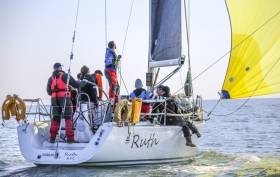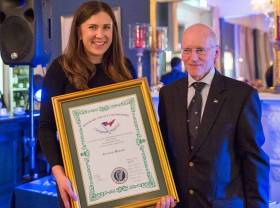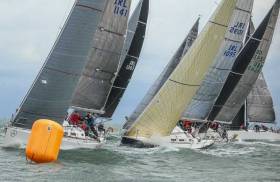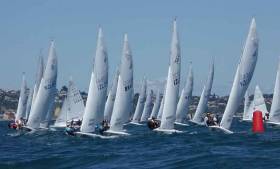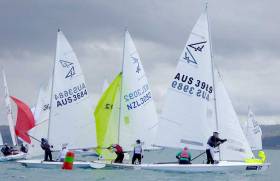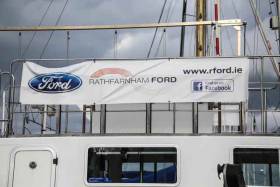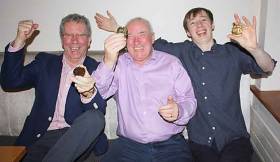Displaying items by tag: National Yacht Club
Volvo Dun Laoghaire to Dingle Race (D2D) race organisers at the National Yacht Club have published five compelling reasons why June's race measures up to be the 'perfect family friendly offshore race'. The club is keen to build on the ethos and tradition of the race.
- 1. At almost 300 miles it is the perfect length typically taking the whole fleet something between 30 and 50 hours to get to Dingle in the beautful surrounds of Kerry.
- 2. It is mostly along the coast rather than a crossing which contrubites to safety and enjoyment.
- 3. It mixes both racing boats and cruising boats with prizes for both.
- 4. It is in the same year as the Fastnet race, thereby providing a perfect training ground for crew and boat as testified to by RORC (the Royal Ocean Racing Club) the Fastnet Race organisers. It also forms part of the ISORA (Irish Sea Offshore Racing Association) season.
- 5. It is a great feeder race. Having arrived in Kerry the participants can choose to cruise the amazingly beatiful area of Kerry and West Cork or head back to Kinsale for Sovereigns Week.
On Tuesday, (April 4) at the official launch in the NYC, the club announces new race sponsors and associates under new race Chairman, Adam Winkelmann.
As if to emphasise this family racing aspect, the last race winner, from 2015 was a dedicated family boat from the host club. Liam Shanahan Jnr skippered his J109 Ruth to victory ahead of Welsh yacht Mojito, (J/109) Peter Dunlop & Vicky Cox, Pwllheli SC. It was a result that enabled Shanahan to lift the Irish Sailor of the Year Award for 2015. The Shanahan entry intends to defend her title and is among the first race entries along another Dun Laoghaire family boat, Aurelia, a J/122, Chris & Patanne Power Smith, from the Royal St George YC who was third in 2015. Read about Liam Shanahan's family sailing values here.
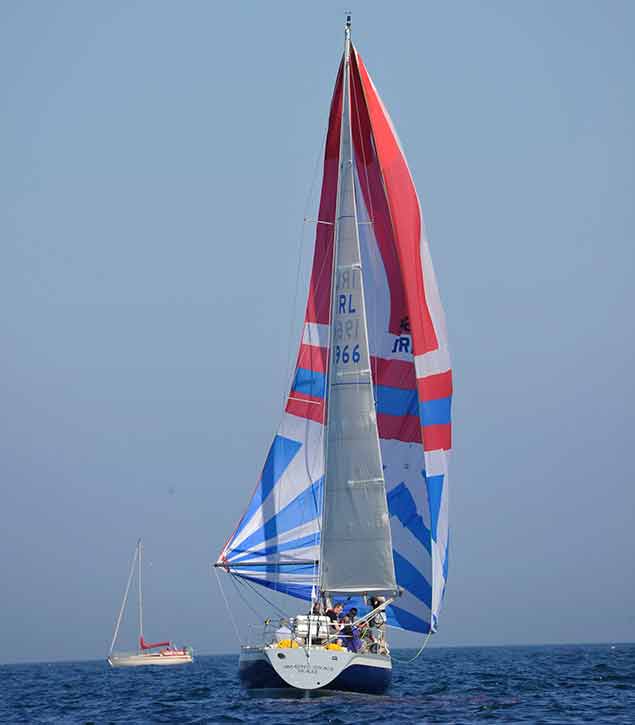 Kerry yacht Amazing Grace (Brian O'Sullivan) clinched the light air 2013 Dun Laoghaire Dingle race title... Photo: Michael Chester
Kerry yacht Amazing Grace (Brian O'Sullivan) clinched the light air 2013 Dun Laoghaire Dingle race title... Photo: Michael Chester
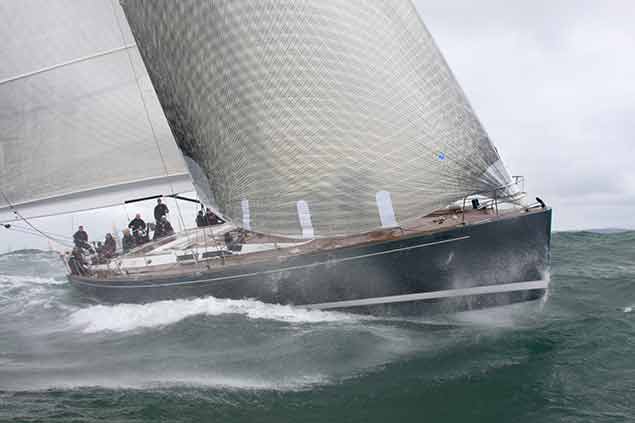 ...but not all editions have been light air affairs. In 2009, competitors got a wild ride to Dingle when winds gusted to 30–knots for the start off Dun Laoghaire and Michael Cotter's Whisper (above) set a new course record. Photo: Afloat.ie
...but not all editions have been light air affairs. In 2009, competitors got a wild ride to Dingle when winds gusted to 30–knots for the start off Dun Laoghaire and Michael Cotter's Whisper (above) set a new course record. Photo: Afloat.ie
Winkelmann is confident of a buoyant entry to match 2015's 30–boat fleet but makes the point entry is still wide open and boats from all ports are very welcome.
The 2017 race starts in Dun Laoghaire from the National Yacht Club on Wednesday June 14th at 19.00 hours. The prizegiving party will take place in Dingle in Benners Hotel on June 17th evening. The organisers expect between 30 and 35 boats across 3 classes, including the mini-transat class racing for the first time with some well know international sailors.
Winkelmann adds “It is great to have Volvo on board to compliment our long term partners in Dingle and in particular the Dingle Skellig Hotel Group. We have been encouraged by the growing interest in the race both at local and international level.” We see the race as the perfect mini offshore.
In addition, the race also has an association with Crean’s Brewery and Billy Naughton Cars of Tralee. Since its inception in 1984 this race has always thrived on the wonderful co-operation between the National Yacht Club in Dun Laoghaire and those local businesses in Dingle that provide a great welcome and hospitality at the finishing destination.
Volvo Car Ireland already firmly established as the brand partner for sailing in Ireland have added the D2D race to the Volvo Dun Laoghaire Regatta and the other major events on the sailing calender in Ireland. David Thomas, recently appointed new Managing Director for Volvo Car Ireland commented that “We are delighted to support this race as we see it as a perfect fit with our global commitment to sailing which extends from the Volvo Ocean Race right down to these important grass roots events in Ireland”.
Read more: Dun Laoghaire to Dingle Race
Ongoing technical issues with the Volvo Dun Laoghaire Regatta website this week is giving sailors an extra opportunity to avail of a discounted early bird entry fee that was due to close today.
Organisers issued an apology via social media this morning adding two weeks to the entry deadline. VDLR say: 'Apologies for the chronic website problems this week - because of this we're EXTENDING the #EarlyBird entry deadline to 13th April'.
In the meantime, while the issues with the site are resolved, an entry list at March 20 is here. And the latest Dun Laoghaire Regatta news is on our dedicated section on Afloat.ie here
National Yacht Club Achievements in 2016 Include Cruising, Offshore, One Design & Dinghy Sailing Success
Dun Laoghaire's National Yacht Club gathered on Saturday to salute top club achievements from 2016. Ten annual awards for outstanding sailing were presented ranging from cruising endeavours to Olympic campaigns. There is no surprise that club member Annalise Murphy topped the awards with her Olympic Silver Medal being the defining moment of the Irish sailing year.
In cruising, The Township Cup went to Jim Gorman for his cruise to Norway. Marcus Higgins was awarded The Muglins Cup for his adventurous cruise on his Vega 27 thorugh the Canal du Midi to Sardinia.
In the offshore racing category, Brian and John Hall were awarded the Boyne Regatta Cup for their victory in the Scottish Series.
In one design racing, The O'Leary Cup went to Mick Leahy and John Power for their performance in the Beneteau 31.7 Levante in both DBSC and regattas in 2016.
View a slide show of the 2016 recipients by Joe Fallon below:
For the summer of 2017 at least, it looks as though Dun Laoghaire Harbour is going to remain free of the threat of the installation of a new liner berth. W M Nixon reckons this provides a unique opportunity for town and harbour to come together as they may have done once upon a time, but have failed to replicate for many years. He provides the background, and makes some suggestions.
The trouble with Dun Laoghaire is that there’s nowhere else quite like it. There isn’t really a truly comparable totally artificial harbour anywhere else on this scale set on the edge of a city, in the midst of an area of general affluence and recreational expectations. It is arguably unique. Nowhere in the world is there a similar setup from which those who hope to manage Dun Laoghaire Harbour effectively might learn lessons on how to make a viable proposition of their port and its future.
Although the original asylum harbour was built by engineer John Rennie and others in majestic style, at the time it had only one simple purpose – to provide shelter for unwieldy sailing ships when Dublin Bay was storm-beset and Dublin Port with its very shallow bar entrance was inaccessible.
The original plans show a sublime indifference to the existence of the little old harbour of Dunleary immediately to the west of the proposed location of the vast new structure. And the little port there has long since disappeared under high value property development to an extent which the early harbour planners cannot have begun to imagine.
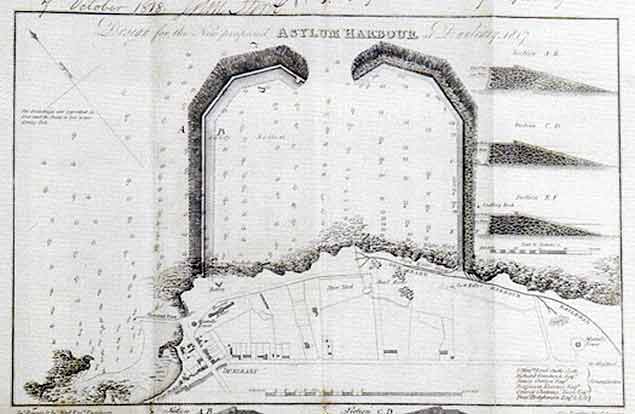 The original plan for the new harbour deliberately excluded the little old harbour of Dunleary to the west, as the new harbour was not intended to provide ship to shore access.
The original plan for the new harbour deliberately excluded the little old harbour of Dunleary to the west, as the new harbour was not intended to provide ship to shore access.
For the idea was not that this would be a port. On the contrary, it would only be a place of temporary shelter in which vessels of importance – particularly those on British government business - would be secure until conditions improved. It was not envisaged that there would be any significant shoreside contact during their short time in what very quickly became Kingstown Harbour.
For of course, no sooner was a harbour under construction, than a town began to develop beside it. It was notoriously un-planned, so much so that fifty years later a critic mocked its name of Kingstown – conferred with a Royal visit in 1821 – by pointing out that far from being a King’s town, it was rather more of a republic of selfish building anarchy.
At the beginning – which we now date to 200 years ago, with the first stone officially laid on May 31st 1817 - significant shoreside development had not been intended. As historian Hal Sisk has pointed out, at no time did the official plans include anything so basic to a proper port town such as warehouses, let alone shipyards or even boatyards. But the basic existence of the harbour in its earliest form by the late 1820s saw the first regatta being staged in 1828. Recreational sailing and the harbour have been intertwined ever since. And the irresistible growth impulse of Kingstown was underlined by the arrival of the railway from Dublin in 1834.
 The eastern part of Kingstown harbour at its Victorian high point as a ferry port. The area in the centre, immediately east of Carlisle Pier, will be used for berthing Classic and Traditional Vessels in July during the Volvo Dun Laoghaire Regatta 2017.
The eastern part of Kingstown harbour at its Victorian high point as a ferry port. The area in the centre, immediately east of Carlisle Pier, will be used for berthing Classic and Traditional Vessels in July during the Volvo Dun Laoghaire Regatta 2017.
We take that date of 1834 for granted, but in terms of world railway history, it was very early indeed. And it in turn roped Kingstown into other unplanned developments. As long as the entrance to Dublin port remained dangerously shallow, Kingstown had all the advantages for the rapid development of the cross channel ferry trade. It was all done initially on an ad hoc basis, but it worked for the ferries, while the already proven attractions of the place as an innovative recreational sailing location made it central to world sailing development by the 1860s and 1870s.
So for most of the two hundred years whose history we’ll be celebrating in July, Dun Laoghaire/Kingtown has been struggling with the fact that the basic concept of the harbour - which by its monumental and historic scale still dictates what can be done with it today – was planned with virtually no attention paid to the sea/land interface.
 Despite the restrictions on waterfront space, Kingstown Harbour had become a leading sailing centre by the latter half of the 19th century, as shown in this painting by Richard Brydges Beechey of a Royal St George YC regatta in the 1870s. Courtesy RStGYC
Despite the restrictions on waterfront space, Kingstown Harbour had become a leading sailing centre by the latter half of the 19th century, as shown in this painting by Richard Brydges Beechey of a Royal St George YC regatta in the 1870s. Courtesy RStGYC
Ideally, when the harbour was being built, at least as large an area ashore should have been set aside on the adjacent land to provide for a proper harbour town. But nothing remotely like this was done, and the railway was brought in by the easiest possible shoreside route, thereby putting another barrier between the growing town and the harbor. As a result, the town/harbour relationship has always been problematic. This is particularly so when allied to the fact that areas of conspicuous affluence are almost cheek by jowl with what seem like semi-deprived areas by comparison.
On top of all this, there’s the eternal problem of paying for the harbour’s maintenance. It was superbly built in the first place, but it would be an insult to those early engineers, and their incredibly industrious workers labouring under dangerous conditions, if we failed to maintain the harbour properly in a manner which respects its original concept, while continuing to give it validity for contemporary life.
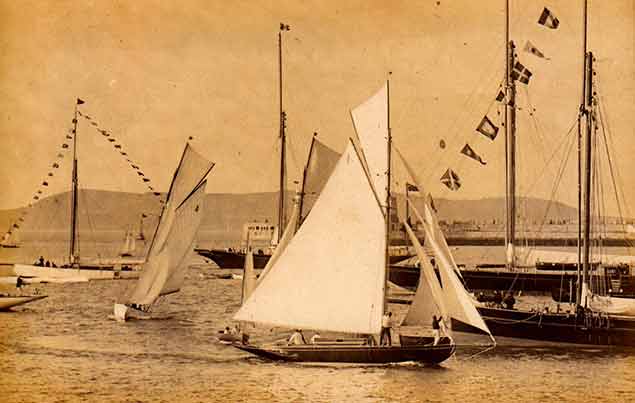 The good old days……..It is the summer of 1901, and the Viceroy Lord Dudley is finishing in-harbour after threading his course through moored yachts to take the win with his new Dublin Bay 25 Fodhla in company with some boats of the new version of the Water Wag class. In second place in the DB 25s is Nepenthe (No 4, Sir H Robinson). Both Dublin Bay 25s were built in Dun Laoghaire by J E Doyle. Photo courtesy Theo Harris
The good old days……..It is the summer of 1901, and the Viceroy Lord Dudley is finishing in-harbour after threading his course through moored yachts to take the win with his new Dublin Bay 25 Fodhla in company with some boats of the new version of the Water Wag class. In second place in the DB 25s is Nepenthe (No 4, Sir H Robinson). Both Dublin Bay 25s were built in Dun Laoghaire by J E Doyle. Photo courtesy Theo Harris
Since the ferries pulled out to re-locate entirely in Dublin Port, taking their guaranteed income stream with them, the struggle has gone on between those who wish to develop any potential the harbour might have for a cruise-liner port of call, and those who feel it should be seen more as a sort of maritime version of the Phoenix Park. They envisage it as a vast breathing space, ultimately maintained by public funds if there’s a shortfall between the income generated by recreational use, and the routine maintenance and administration expenses.
But for the moment, any further development has been postponed awaiting a court case. In it, the point is to be made that making the harbour accessible to functioning liners, with emission-spewing machinery working on a 24/7 basis, will have the effect of polluting the atmosphere in and around the harbour - particularly along the East Pier, the regular promenade for thousands of Dubliners in search of fresh air.
Apparently this point had not been made in the original hearings, so the result is that for the summer of 2017, Dun Laoghaire Harbour will continue as it is at present, with new areas of open sailing space available following the removal of the Stena installations.
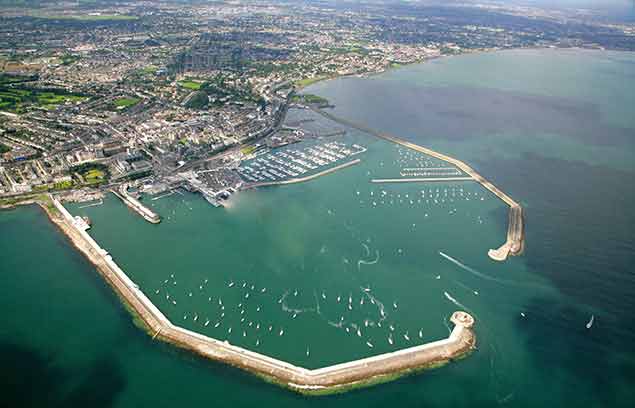 Dun Laoghaire Harbour as it is at present, offering ample space for finishing races. Photo Peter Barrow
Dun Laoghaire Harbour as it is at present, offering ample space for finishing races. Photo Peter Barrow
In the circumstances, surely this is a golden opportunity for the organisers of the Volvo Dun Laoghaire Regatta 2017 to take a look at any section of their enormous and very varied entry list, and select classes which could be given the treat of having at least one of their races finish within the harbour?
Increased ferry traffic was just one of the reasons why the racing for larger craft was obliged to take place outside the harbour. For national and international events, the obsession with committee boat starts and finishes further dictated the move seaward. In Dun Laoghaire, it meant that the connection between the town and active highly-visible sailing became more tenuous than ever.
Yet if we look back to old photos of Dun Laoghaire when it was in the full pomp of its years of Kingstown yachting glory, it was the action in the harbour which brought the whole show to life, and gave everyone a sense of involvement. So let’s hope that the powers-that-be realize that the deferring – permanently we hope – of the proposed liner berth offers an opportunity. Liners Out, Sailboats Back In – that could be the slogan for 2017.
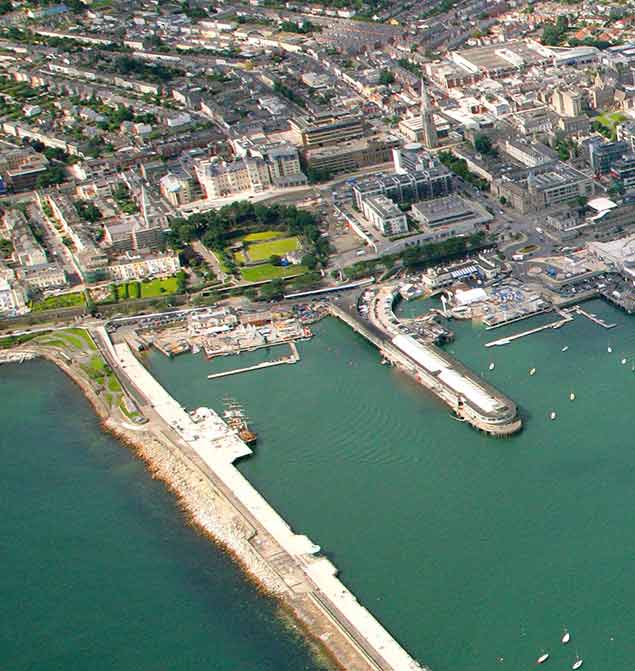 The accessible area off the National YC (photo pre-Lexicon) will provide berthing for Classics and Traditional craft Photo: Peter Barrow
The accessible area off the National YC (photo pre-Lexicon) will provide berthing for Classics and Traditional craft Photo: Peter Barrow
Of course we don’t expect that the really hot classes will agree to finish in-harbour. But there’s something about the Volvo Dun Laoghaire Regatta which attracts a significant segment of participants for whom a bit of fun is central to the sport, and indeed there are many who think that the real sport would be in having to make an in-harbour finish.
The Classics and Traditional Craft will be playing a significant role in this special year. In addition to a dedicated berth with lots of pontoon length being provided for them in the area off the National Yacht Club, the word is that on one day at least, they will have their start in the harbour, highly visible from the East Pier in the area immediately beyond the Carlisle Pier.
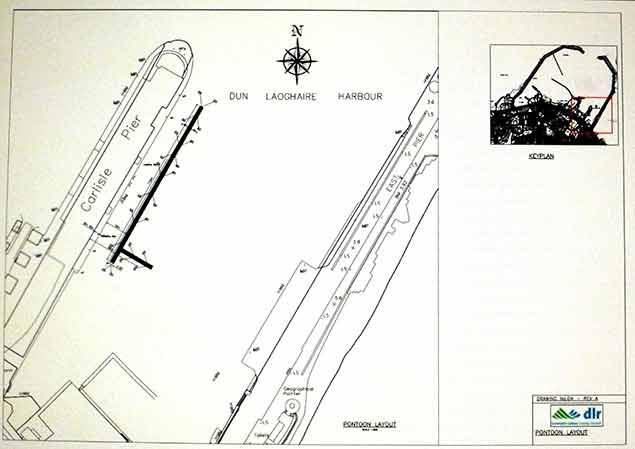 Plan of the proposed pontoon location off the National YC to berth “boats with bowsprits”.
Plan of the proposed pontoon location off the National YC to berth “boats with bowsprits”.
With boat types such as Drascombes coming as a fleet, the notion of the potential accessibility of sailing could be given an enormous boost. What could seem more approachable than the presence of Drascombe man Jack O’Keefe and his mates in friendly competition within the harbour, along with all sorts of other exotic craft such as the Shannon One Designs?
 Jack O’Keeffe’s Drascombe is usually seen in distant ports of the west… .Photo: Pierce Purcell
Jack O’Keeffe’s Drascombe is usually seen in distant ports of the west… .Photo: Pierce Purcell
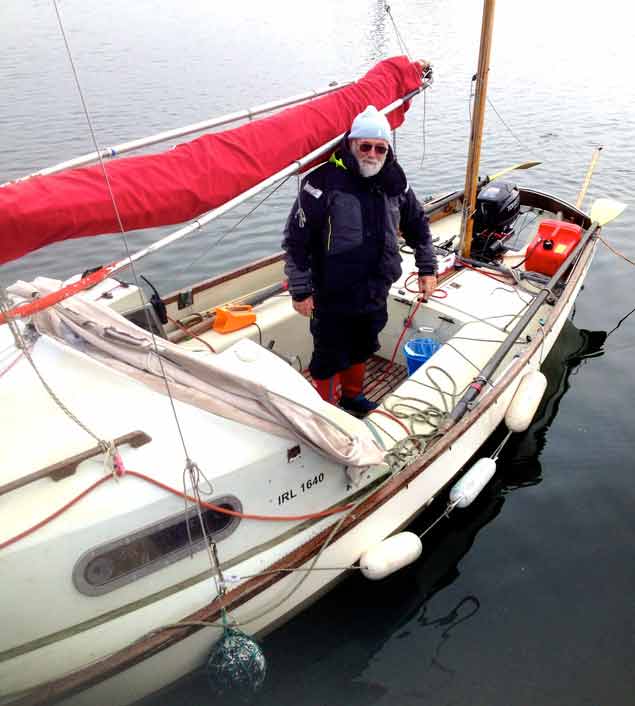 ….but in July 2017 he and his fellow enthusiasts are headed for Dun Laoghaire’s Bicentenary. Photo: Pierce PurcellNot least of such exotica will be the Water Wags, more than ever a part of Dun Laoghaire sailing and Dun Laoghaire Harbour. At this week’s launching of Volvo Dun Laoghaire Regatta ing of Volvo Dun Laoghaire Regatta 2017 in the National Maritime Museum, there was something very touching about the way that the only surviving boat of the original Water Wag class of 1887, the world’s first One Design, had been moved to the centre of the former Mariners Church. The little boat was there in pride of place as the great and the good of Irish sailing networked with each other as plans were revealed of the remarkable amount of behind-the-scenes work that goes into ensuring that this largest of all Irish sailing events runs smoothly.
….but in July 2017 he and his fellow enthusiasts are headed for Dun Laoghaire’s Bicentenary. Photo: Pierce PurcellNot least of such exotica will be the Water Wags, more than ever a part of Dun Laoghaire sailing and Dun Laoghaire Harbour. At this week’s launching of Volvo Dun Laoghaire Regatta ing of Volvo Dun Laoghaire Regatta 2017 in the National Maritime Museum, there was something very touching about the way that the only surviving boat of the original Water Wag class of 1887, the world’s first One Design, had been moved to the centre of the former Mariners Church. The little boat was there in pride of place as the great and the good of Irish sailing networked with each other as plans were revealed of the remarkable amount of behind-the-scenes work that goes into ensuring that this largest of all Irish sailing events runs smoothly.
In the 1890s, there must more than a hundred of these little boats in and around the Greater Dublin area. Even Erskine Childers, with part of the summer of 1894 unfilled in his plans, arranged to have one carted up into the Wicklow Hills to the mountain lake of Lough Dan near the house of his mother’s family, so that he could go sailing when the mood took him.
Yet with the new larger boats introduced in 1900, the little old double-enders just faded away. Fortunately, someone noticed that an odd-looking little canoe-sterned dinghy with a centreplate case on the beach at Malahide was one of the original Water Wags. She was being used for the occasional fishing trip, and it had been a long time since the centreplate had been used for sailing.
She was saved in the nick of time, and is now kept fully rigged in the Maritime Museum. But as the Wag Class historian Vincent Delany assured me at the Volvo reception, she really is absolutely the only surviving original example of a boat which was once so numerous, and fundamental to the global development of sailing.
 The original Water Wags of 1887, the world’s first One Design class. Despite being numerous in the 1890s, the original boat on display in the National Maritime Museum in Dun Laoghaire is now thought to be the only survivor of this historic type.
The original Water Wags of 1887, the world’s first One Design class. Despite being numerous in the 1890s, the original boat on display in the National Maritime Museum in Dun Laoghaire is now thought to be the only survivor of this historic type.
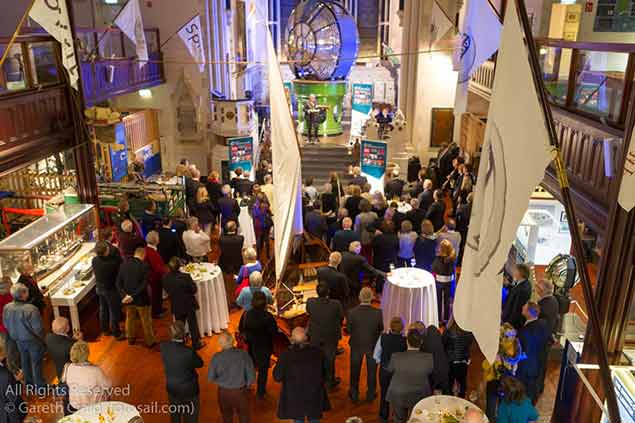 At the heart of things. The sole surviving Dublin Bay Water Wag of 1887 in the midst of the Volvo Dun Laoghaire Regatta 2017 launch reception in the National Maritime Museum on Wednesday night.
At the heart of things. The sole surviving Dublin Bay Water Wag of 1887 in the midst of the Volvo Dun Laoghaire Regatta 2017 launch reception in the National Maritime Museum on Wednesday night.
Dun Laoghaire Ready to Host Ireland’s Biggest Sailing Fixture
The 2017 Volvo Dun Laoghaire Regatta (VDLR) which is now established as the biggest sailing event in Ireland was launched this evening at the Maritime Museum in Dun Laoghaire. This biennial fixture which is organised by the four Dun Laoghaire waterfront yacht clubs (the Dun Laoghaire Motor Yacht Club (DMYC), the National Yacht Club (NYC), the Royal Irish Yacht Club (RIYC) and the Royal St George Yacht Club (RSGYC) will take place across four days in early July and attracts yachts from all four coasts of Ireland and from England, Scotland, Wales, Northern Ireland and the Isle of Man, and more locally from all the four Dun Laoghaire based yacht clubs.
Speaking at the launch event, David Lovegrove, President, Irish Sailing Association (ISA) said “The VDLR is now firmly established in Ireland’s major sporting calendar and is the biggest participant sporting event in the country, after the city marathons. We are also proud that the VDLR continues to grow and build upon Ireland's international reputation as a quality sports and sailing destination and cements Ireland's reputation as a location for a major international regatta. In addition, local area businesses will benefit considerably from the influx of visitors as they enjoy the superb sailing action in Dublin Bay and a fantastic array of family oriented activities that have been set up on shore.”
The key classes of yachts that will attract the most attention and competition during the Regatta will be the IRC Class 0, Class 1, Class 2, Class 3 and the IRC Offshore Class, who all, already have strong noteworthy entries. In addition, other ‘one design’ classes will include the Beneteau 31.7s, Beneteau 211, Sigma 33, Ruffian 23s, Dragon, RS Elite and the Shipman 28. The dinghy classes will include the GP14, Wayfarer, Squib, Mermaid, Flying Fifteen, Fireball, and single-handed Lasers and Moths.
Most notably this year there will be a Classics division in VDLR 2017 comprising a ‘Kingstown 200’ Anniversary Cup as part of the Dun Laoghaire Harbour Bicentenary Festival from July 6th to 9th 2017.
A monument on the Dún Laoghaire sea front commemorates the first stone of the eastern pier laid by his Excellency Charles Earl Whitworth Lord Lieutenant General and General Governor of Ireland on 31st May 1817, and the visit of King George IV in 1821 (Asylum Harbour of Dunleary was named Kingstown in 1821 and renamed Dun Laoghaire in 1920).
Also speaking at the launch event, Tim Goodbody, Chairman, VDLR 2017 said “The VDLR owes its prominence in European sailing events to a number of factors. One of the core attributes to attracting so many entrants is that it is one of the least expensive sailing events in Europe, thanks to generous sponsorship and support, so providing great value for money for all in the lovely waters of Dublin Bay” .
We also have more than 300 volunteers who give their time and energy to ensure the regatta runs smoothly, as well as the active cooperation of local area businesses and the Dun Laoghaire-Rathdown County Council. And of course the support from the thousands of visitors who come to watch the spectacle and take part in all the family oriented activities in and around Dun Laoghaire.”
“In addition the Regatta brings a significant amount to the local economy. Using the Irish tourism multiplier, the average expenditure per competitor will be €60 per day which for 2,500 competitors will be €150,000 per day and €600,000 for the four day event” added Tim Goodbody.
The VDLR is kindly supported by
• Volvo Car Ireland in partnership with Spirit Motor Group (Title sponsor)
• Dun Laoghaire Rathdown County Council
• Dun Laoghaire Harbour Company
• Failte Ireland
• Collen Construction – New Sponsor
• Helly Hansen
• Royal Marine Hotel
• Bretzel Bakery
• Dubarry
Does ICRA Mean 'Ireland's Craziest Racers Afloat'?
On the other hand, ICRA could equally mean 'Ireland’s Cool Runnings Assembly'. In the week in which the Travelling Community was granted Ethnic Minority Status, W M Nixon finds himself among two groups which might be equally deserving of such recognition.
You know how it is as we swing into Spring and its embarrassment of Saturday choices. There it was, Saturday 4th March coming up on the busy agenda, and the inevitable dilemma. Should we be in Cowes for the Annual General Meeting of the Association of Yachting Historians in the Squadron castle? Or was appearance mandatory at the Irish Cruiser Racing Association’s day-long Annual Conference in Limerick, followed by a mysterious awards ceremony that night in the Royal Irish Yacht Club in Dun Laoghaire?
The old Learjet being no longer airworthy, it was a case of staying on the Irish island rather than that of Wight, and trusting that our car-of-a-certain-age-of-a-Swedish-brand-which-is–no-longer-manufactured would be up to the rigours of the M7. For the fact that trains go only to railway stations rather than your actual destination made the car the only option for a trans-island logistical challenge in very limited time.
 The ICRA Annual Conference has become a staple of the early Spring programme
The ICRA Annual Conference has become a staple of the early Spring programme
I know some people do double journeys like this five days a week as part of their working lives, and take it for granted. However, as one who rates long-distance commuting right up there with wind farms as one of the crazier things about modern life, it’s quite an effort to get the body there and back again, and the soul takes even longer.
What on earth can it all be for? But then you step into the Conference Centre in the Castletroy Park Hotel with everyone – most of them acquaintances and many old friends - sat in companionable comfort around a mega-table as though we’re negotiating peace in Syria. And it’s like stepping into a judiciously-drawn bath of the perfect temperature. For these are kindred spirits, upwards of seventy of them from all parts of Ireland, and we’re going to talk about boats and sailing matters all day. Bliss.
For an outsider, though, I can see that this must seem like a separate species talking in their own language. The thought of Travellers rattling away in Shelta at the Ballinasloe Horse Fair springs to mind. So yes indeed, let’s give ICRA enthusiasts Ethnic Minority Status. After all, like Travellers, ICRA people’s special enthusiasm in life is to pack themselves into crowded damp spaces and try to move around and possibly get somewhere else at least as soon as the others. And when they do get there in any significant numbers, it disturbs the peace of the neighbourhood and creates nervousness in parents with daughters of a certain age, fearful that they might be attracted to the nomadic life.
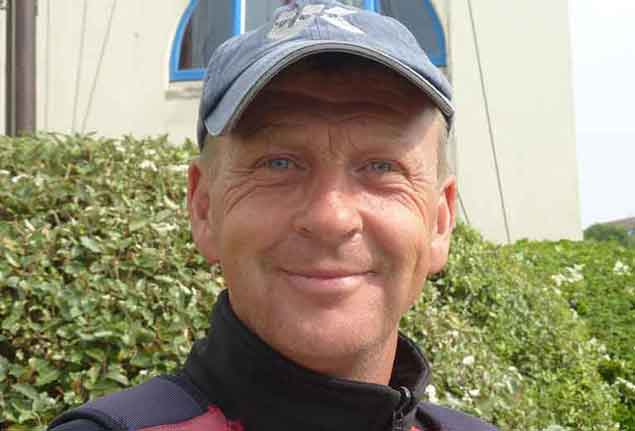 Simon McGibney leads ICRA with energetic enthusiasm
Simon McGibney leads ICRA with energetic enthusiasm
But enough of such dreaming, there was serious business to be done. And with people of the calibre of ICRA Commodore Simon McGibney of Foynes YC and ICRA number-cruncher Denis Kiely of Kinsale as joint MCs, the pace was impressive.
Simon is the leaping-about man, making his points here, there and everywhere, and when he reckons he isn’t everywhere enough, his fellow Foynes yottie and sailing instructor Elaine O’Mahoney dances in to give assistance.
Denis by contrast is Buddha-like. He sits in the one place with a commanding view of everyone, and orchestrates proceedings and Q&A sessions with a natural authority which makes you think he should be right there in Geneva or wherever it is, bringing order and peace to the Middle East.
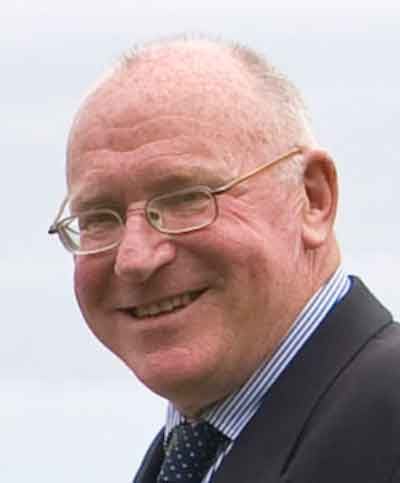 Denis Kiely gave us all an object lesson in how to orchestrate a conference and handle Q&A sessions
Denis Kiely gave us all an object lesson in how to orchestrate a conference and handle Q&A sessions
For people for whom sociable business conferences are a regular part of life, I presume all this is all run-of-the-mill. But I’m the single spy who works alone in a rat’s nest of an office with a clutter of material within arms reach when it’s not available on the proper-size screen which rules my life, so experiencing human interaction at this level is bracing, to say the least.
And the ICRA annual gathering is such a clearcut focal point for a certain type of sailing enthusiast that it attracts international attention. Last year, we had Dobbs Davis and Zoran Grubisa of the Offshore Racing Congress promoting their measurement rule. As one had travelled from America while the other had come from Croatia to spread the message, I suppose the fact that the man from the International Rating Certificate office had only come over from Lymington to talk to ICRA wasn’t such a big deal. But Mike Urwin is such an obliging bloke, and an entertaining speaker with it, that we can’t help but nurture a secret hope that the possible discussions under the aegis of the RORC about amalgamating the two systems go on for ever, for their success might deprive us of entertaining speakers….
 Mike Urwin made the case for IRC in engaging style
Mike Urwin made the case for IRC in engaging style
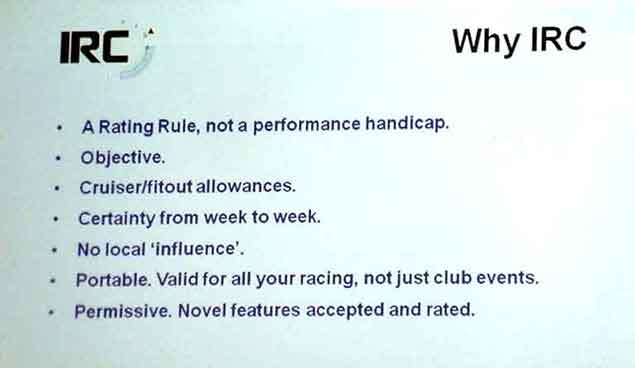 What the IRC does
What the IRC does
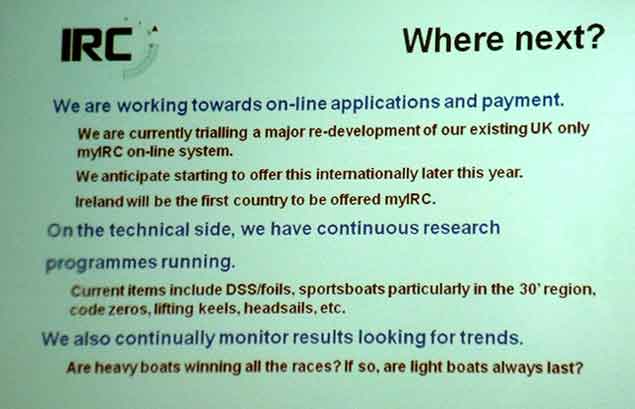 The prospects for IRC. Ireland is going to be the test-bed for the internationalization of the online service.
The prospects for IRC. Ireland is going to be the test-bed for the internationalization of the online service.
I’d an insight into the special role Mike fills in the international offshore racer community one summer’s evening a year or two back, when I’d an email from a guy on quayside in the Mediterranean where he’d found himself looking at the Ron Holland-designed Irish Mist II of 1975 vintage, and that very special boat had a Se Vende notice. She was built in Cork for Archie O’Leary to come out as a distinctly potent machine around 40ft long, and our man on the quay guessed that he might have a worthwhile performer for the Committee International Mediterannee (CIM) vintage IOR class, if only he could be sure that an IOR Rating for Irish Mist II from the 1970s could be given full provenance.
When you get such a message outside of what used to be called working hours, time was when you’d put off dealing with it until the next morning. But I simply fired off an email to Anthony O’Leary whom I knew to be doing Cowes Week in Antix at the time, and from the midst of some après sailing pub came the message: “Mother of God, does this guy think I carry a filing cabinet around with me? And anyway, in the 1970s I’d better things to do than look after the paperwork”.
But then half an hour later from another pub came the message “Rob Jacob says we should signal Mike Urwin, will let you know”. And believe it or not, before the night was out, we had the word that Mike had been able to access an IOR Rating Certificate for 1978 for Irish Mist II, and all was well with the world.
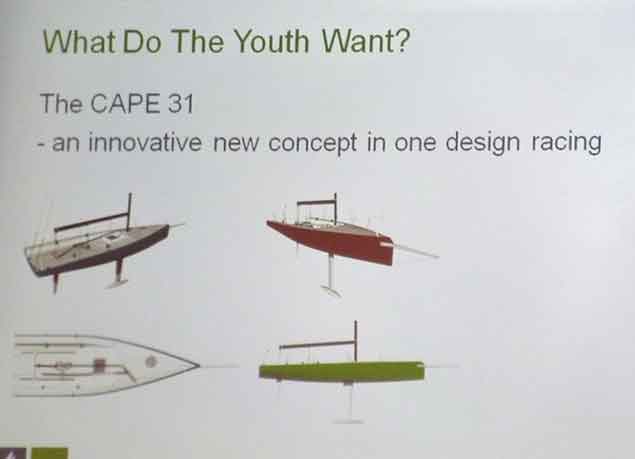 Nobby Reilly is convinced young Irish sailors will be looking to boats like the new Mark Mills-designed Cape 31. Old salts will know the original Cape One Designs of 1956 provided the hull shape for the famous Black Soo.
Nobby Reilly is convinced young Irish sailors will be looking to boats like the new Mark Mills-designed Cape 31. Old salts will know the original Cape One Designs of 1956 provided the hull shape for the famous Black Soo.
As to matters in Limerick, the conference got off to an energetic start with former Commodore Nobby Reilly of Howth analyzing what the new generation seeks in cruiser-racers to guide us into a theme of the day, the ever-present need to make the world aware that cruiser-racing – whether inshore or offshore - can be great sport. And the tinkering with your boat to maximize your rating is not a drawback - on the contrary, it’s part of the technical interest of the sport in its broadest sense. On top of that, there’s funding available from ICRA for clubs which want to develop cruiser-racing as part of their local programme, and there’s a wide range of support material which will raise the ICRA presence in your area and prove mutually beneficial.
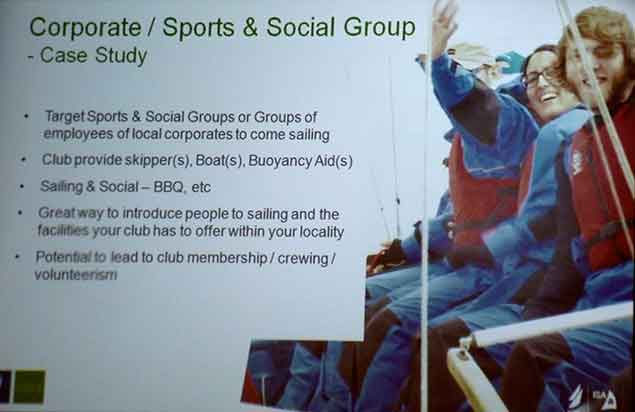 A case study of corporate promotion was presented…..
A case study of corporate promotion was presented…..
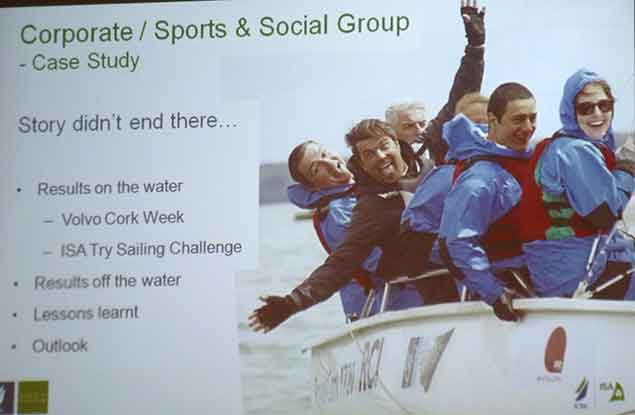 ….and we got the follow-up too
….and we got the follow-up too
Particularly interesting was the presentation from Colin Moorehead with useful interjections from Denis Kiely about how the Training Grant scheme and the promotion with the ISA of the Try Sailing project in the context of Colin’s own club, the Royal Cork, had been so successful that at Afloat's and the ISA's National Sailing Awards at the end of January, Colin was singled out for an award himself.
Simon McGibney then took over for an energetic outline of the working of the Crewpoint scheme, to let people know that the most important thing – as in so many areas of life – is simply to turn up, ICRA and other volunteers will take it from there, and you’ll get your introduction to sailing.
 Simply turn up – the ICRA, ISA and Club volunteers will take it from there
Simply turn up – the ICRA, ISA and Club volunteers will take it from there
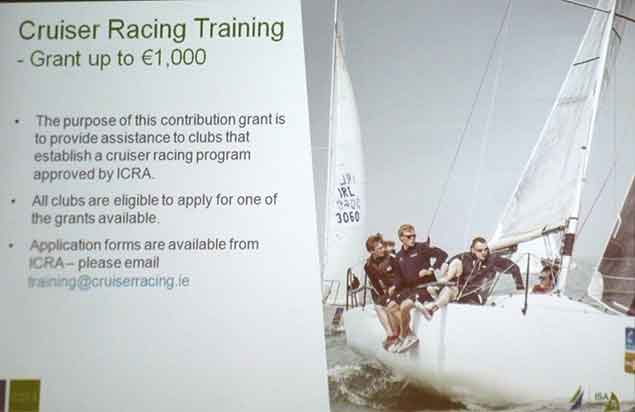 Need we say more?
Need we say more?
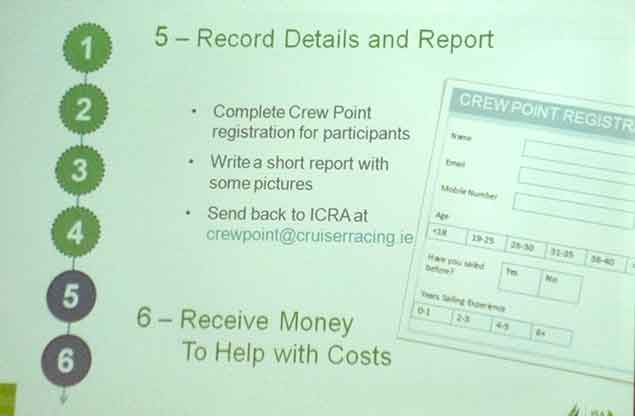 All that ICRA ask is that you clearly display their banner and don’t just leave it in a cupboard, and you report back to them on the progress of the programme
All that ICRA ask is that you clearly display their banner and don’t just leave it in a cupboard, and you report back to them on the progress of the programme
Sensibly refreshed by lunch, we found any tendency to a post-prandial zizz completely blown away by Maurice the Prof O’Connell’s presentation on Embarr’s world championship win. It was riveting stuff, with the effort involved generally – and not just the superhuman dedication to achieving maximum fitness and optimum crew weight – giving a vivid illustration of the utter diversity of our sport, which takes in everything from gentle sailing in a local classic class to the Worlds of specialist boats like the Melges 24.
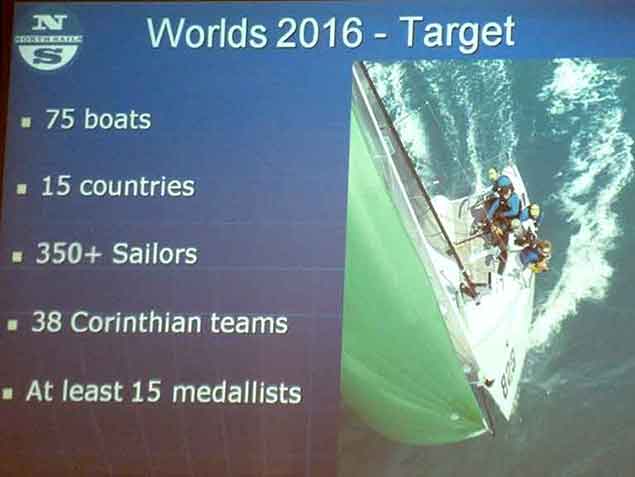 A mountain to climb – the target set for Conor Clarke’s Embarr
A mountain to climb – the target set for Conor Clarke’s Embarr
 The programme to get there…
The programme to get there…
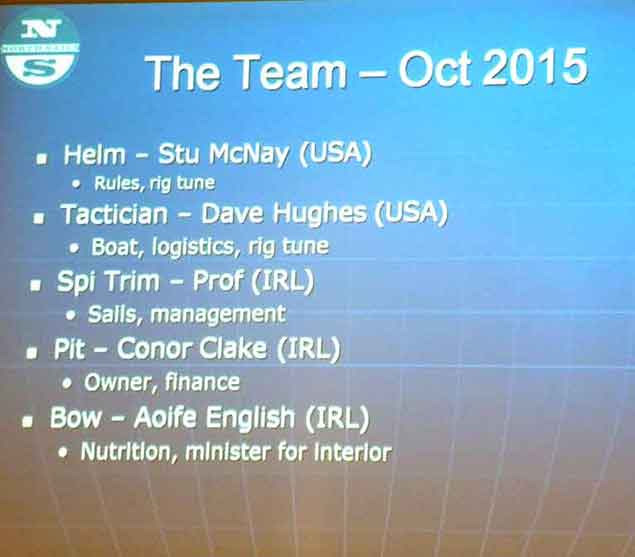 And the team that did it
And the team that did it
It’s easy to complain that the existence of more than 150 recognised World Championships in sailing dilutes the impact of the sport. But the truth is that this diversity is central to the whole picture, and sailing benefits by so many valid prizes being available for the wide range of One Design classes.
And that’s before we moved on to Mike Urwin’s presentation on the added level of diversity which is dealt with through the IRC. Of particular interest in Ireland was his assertion that “protecting the existing fleet” is at the core of the IRC’s functioning, for the fact is many of us are optimising and actively racing boats which would be older than those found elsewhere.
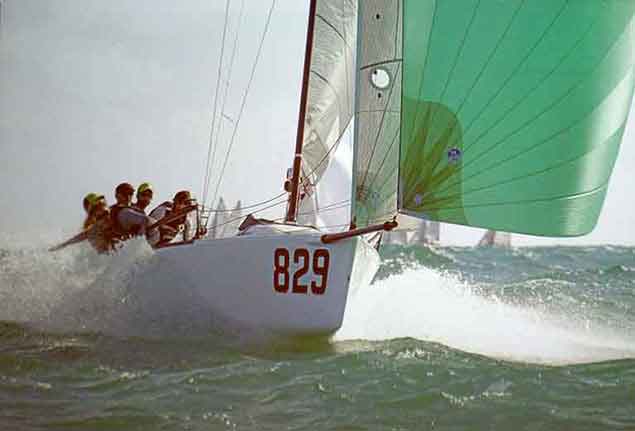 We have a result…..Embarr on her way to winning the Worlds, November 2016
We have a result…..Embarr on her way to winning the Worlds, November 2016
We do so through a crowded programme of events. ICRA tries as far as possible to take the mission to as many clubs as possible, thus it prefers to maintain the independence of its National Championship, rather than subsuming it into some larger regatta. So special attention was paid to Paul Tingle of Royal Cork, as he is organising the ICRA Nats there on from June 9th to 11th. It’s a time when the activity levels are soaring throughout sailing, but the lure of the Nationals carry their own appeal against what might be seen as rival events.
Certainly regular readers of Afloat.ie will be well aware of the energetic levels of discussion as to how the annual sailing programme might be better structured. But if you insist on amalgamating events and championships, you reduce the significance of the prizes involved. Not everyone aims to win a World championship, but it’s encouraging to any crew to finish with their name up in lights just now and again. So in tandem with the continuation of a crowded programme, the development of ICRA’s Progressive ECHO performance handicap system is another important part of this significant organisation’s contribution to Irish sailing.
As ever, the conference ended on the highlight of ICRA “Boat of the Year”. On Afloat.ie in the week from Monday February 27th until the conference itself on Saturday March 4th, we ran an online poll which had a very gratifying response. But as with other awards, it was done in the knowledge that such polls are only advisory, as judges have a job to do to keep populism under control.
Thus in the Afloat.ie poll. Jonny Swann’s Half Tonner Harmony from Howth topped the votes at 949 (39.9%) while John Maybury’s J/109 Joker 2 from the Royal Irish YC in Dun Laoghaire logged 831 votes to come in at 35%. Yet it was Joker 2 which became Boat of the Year 2016, and rightly so, but maybe somebody should have come up with an award for Boat Which Most Stylishly Survived A Port Tack Mark Rounding Event During A Major Championship Trophy for Harmony…
Taking the road home for that night’s awards event at the Royal Irish, the thought processes were at first dominated by ideas put forward by Peter Ryan the chairman of ISORA, and John Hughes who has now taken on the mantle in Wicklow of running the Round Ireland Race, as I’d been sitting with the two of them during the Conference.
Both as ever were bubbling with ideas, but John particularly has one which will be of interest, as on the same day as he starts the next Round Ireland Race in June 2018, he will start a much shorter co-event, from Wicklow to Cork Harbour, with the Royal Cork at Crosshaven hosting the finish.
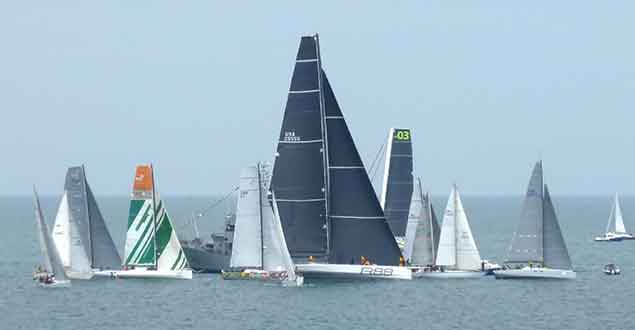 George David’s Rambler 88 finding her way through a motley fleet at the start of the Volvo Round Ireland Race 2016. What would it be like if the start of the classic Round Ireland Race in June 2018 was combined with its proposed new shorter sister, the Wicklow to Cork Race? Photo: W M Nixon
George David’s Rambler 88 finding her way through a motley fleet at the start of the Volvo Round Ireland Race 2016. What would it be like if the start of the classic Round Ireland Race in June 2018 was combined with its proposed new shorter sister, the Wicklow to Cork Race? Photo: W M Nixon
The debate was whether or not he should start the shorter race before or after the main event, but it was somewhere in the midst of zooming through a rainshower in Laois that I realized he should start them together. Boats would be invited to enter both races (at the full entry fee, of course) and then as they’re slugging to windward off Cork Harbour on Sunday night and in the small hours of Monday morning, when some sad and seasick crewman says he or she wishes they were racing to Cork Harbour, the kindly and generous owner-skipper can say: “We are!”, he then throws a right into Cork Harbur, but they still have a result…..
It was all a suitably daft scenario to get oneself in the right frame of mind for dinner through an evening and night in the Royal Irish Yacht Club in Dun Laoghaire, an establishment of which a notably acerbic observer of Irish sailing has remarked: “Irish sailing is divided into those who get the Royal Irish, and those who don’t, and that’s all there is to it”.
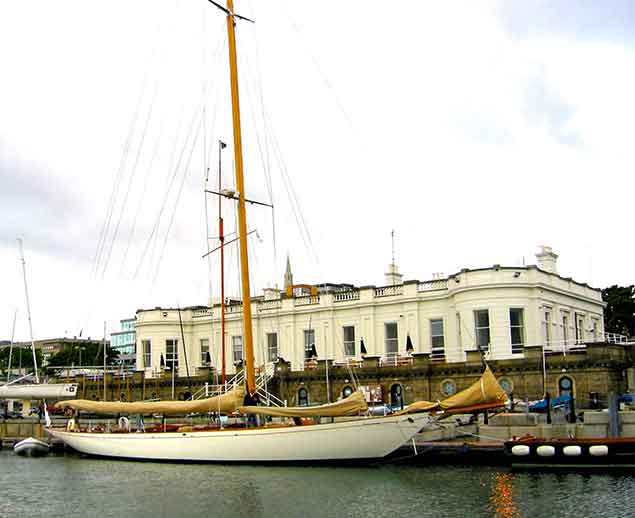 “You either get it, or you don’t…..” The Royal Irish Yacht Club in Dun Laoghaire, with the Fife-desgned 70ft Hallowe’en, line honours winner in the 1926 Fastnet race, berthed alongside. Photo: W M Nixon
“You either get it, or you don’t…..” The Royal Irish Yacht Club in Dun Laoghaire, with the Fife-desgned 70ft Hallowe’en, line honours winner in the 1926 Fastnet race, berthed alongside. Photo: W M Nixon
Definitely a case for Ethnic Minority Status here too, one might think. But anyone who reckons this unique establishment is above the hurly burly of every day competition afloat would already have been put right by being in Limerick, and realizing that both Conor Clarke’s Embarr and John Maybury’s Joker 2 are part of the Royal Irish fleet. Nevetheless I’d received an invitation that could be interpreted ever which way, so the best thing was to hide oneself in a table of very good friends among whom the classic boat ownership included two Water Wags, three Howth Seventeens, and an indeterminate number of Dublin Bay 21s, two of which may have changed hands during the course of the evening.
Next door to us was the much larger and more boisterous assembly of George Sisk’s crew apparently - as since revealed in Afloat.ie - deciding they were by no means past it yet, and working towards supporting their skipper in a decision for a new Class Zero boat. The evening drew on, and then with classic laid-back RIYC style, Rear Commodore (Sailing) Patsy Burke oversaw the awards which saw the following honours:
Boat of the Year: Jim McCann & Paul Cadden (Peridot)
Cruiser of the Year: Des Cummins & Storme Delaney (joint winners)
Best International: Saskia Tidey and Andrea Brewster (49erFX)
Best IRC: Colin Byrne (Bon Exemple)
Best Cruiser-racer ECHO: George Sisk, WOW
Traveller Award: Paul Smith & Pat Mangan (Jill)
Best One Design Result: Ger Dempsey & Chris Nolan (Venue’s World)
Best White Sail Result: David Clarke (Fortitudine)
Contribution to Sailing: Henry Leonard
Most improved boat: Derek Butler (Borraine)
Best Big Boat Performance: Enda O’Coineen (Kilcullen Voyager)
Volunter of the Year (House): Winifred McCourt
Volunteer of Year (Sailing): Tim Carpenter & Kevin Leonard (joint winners)
Most improved Adult Sailors: Katherine Sheehan & Tony Barlow
Somewhere in the midst of it, your reporter received an award for scribbling, And as you’ll note the intrepid Enda O’Coineen was honoured for his astonishing achievements against the odds during 2016 in his Open 60 Kilcullen Voyager, for it was a cruel swipe of fate that his mast should come crashing down on January 1st 2017.
Thus your reporter was left looking like a stunned mullet, as for some reason I’d got it into my head that there was a literary dimension to it all, and the reason I’d been invited was to honour Enda O’Coineen’s best contribution to Irish sailing in 2016. We highlighted it here on Christmas Eve. But it’s well worth looking at again:
National Yacht Club Pair Back in Top Ten At Flying Fifteen Worlds, Jerwoods Sail Into Contention in New Zealand
What a difference a day makes, the sun came out for day four of the 21st Lexus Flying Fifteen World Championship in Napier writes Johnny Fullerton. Race 5 was sailed in a light NE breeze shifting from 40 - 50 degrees, but with a short chop rather than the rolling swell of the last few days. As they say in these parts, the lambs were just about to leap out of the paddock, allowing the bigger crews to get out on the side decks and even do a bit of hiking! Ireland's sole interest represented by National Yacht Club pairing Charles Apthorp and Alan Green are back in the top ten overall after five races sailed.
57 Fifteens were spread across the start line in a far more conventional start but with new choices over upwind tactics. Whilst the majority of the fleet decided to work the left, a late shift favoured the boats that had really banged the right corner hard!
Of these kiwis, Brian & Bridget Kent from Royal Akarana YC in Auckland, sailed a blinder to round the top mark in the lead from the Flying Flamingos, Lewis Davies & John Radnell from Daveys Bay YC in Australia. (These guys are easily recognisable with their pink, hats, kite and accessories!. Another kiwi boat in the Silver fleet, Wade & Lyle Tresadern from Bucklands Beach in Auckland, rounded in 3rd.
Most of the usual suspects were a bit deep in the pile with work to do but It only took the first run to see some of the downwind specialists starting to make their move. Steve Goacher rounded in the top 15 but scythed down the middle of the course to put pressure on the leaders at the gate. Nick & Janet Jerwood (AUS) were also working their way into the mix after a late change of gate choice at the gate got them on the right side of the race course for the beat.
Back upwind the pressure stayed a bit more reliable but a new leader was emerging in David Williamson & Craig Morton (AUS) from Mordialloc SC in Victoria. The Aussie crew had the two previous world champions chasing them down both legs of the triangle. Behind them there was a lot of shuffling in the lead pack, places could be won or lost on the boat handling at the gybe mark. But the real test was the final working leg to the finish. This is where the real champions work their magic and there was little surprise when the smiling faces of Nick & Janet Jerwood from South of Perth YC, were seen tacking up to the line with a reasonable lead. They crossed to take their first gun of the championship and leap back into contention for the tile with two days to go.
“We had two very difficult legs, we got to the top mark in the low teens and managed to get the bottom of the run wrong and lost a lot of spots there, I am guessing we were about 20th there. Things stated to get a bit better from there, we made a late decision to change gates at the bottom and it was a really good decision, put us on the right side of the course and we were able to pick a few good shifts which put us back into the top 10 and we took a few more as we progressed up to the beat to 4th so that was the best leg of the regatta for us so far from 20th to 4th.”
“Two days to go but we still have to sail the best race you can, the wind is way too localised, you can be 4 or 5 boat lengths away from somebody and be in totally different conditions so you just have to sail the best you can with what you have at that point in time. It is just going to be a case of how fast you can get round that race course. We actually used toe straps for the first time in the regatta today and it was great so I am looking forward to more of that in the final two days.” Nick Jerwood
Second to finish was Steve Goacher & Tim Harper (GBR) who is now able to drop his 19th place to take the overall lead in the regatta by 4 points. With the discard coming into play, the overall leaderboard sees a few changes with previous leaders Matthew Owen & Andrew Reed (AUS) from Canberra, slipping to 3rd overall, and Ashley Smith & Adam Kingston from Queensland (sailing under the Hong Kong flag), dropping their 35th to jump up to 4th in the overall classification.
With two days to go the pressure is rising and so is the barometer. There is a promise of more warm weather and a bit more breeze which might just suit some of the bigger crews who enjoy a bit of planing activity for which the Flying Fifteen is famous for.
Race 6 is scheduled for a 1300hrs (local) start time.
Results (Top 10 of 57 entries, after 5 races with 1 discard)
1 GBR 4021 Steve Goacher / Tim Harper - (19),8,1,1,2 = 12pts
2 AUS 3986 Nick Jerwood / Janet Jerwood - 5,2,8,(20),1 = 16pts
3 AUS 3684 Matthew Owen / Andrew Reed - 2,4,7,9,(12) = 22pts
4 HKG 3972 Ashley Smith / Adam Kingston - (35), 46,4 = 28pts
5 GBR 4005 David McKee / Mal Hartland - 7,10,2,10,(23) = 29pts
6 GBR 3760 Jeremy Davy / Martin Huett - 9,5,10,7,(16) = 31pts
7 NZL 3840 Murray Gilbert / Jonathan Burgess - (32), 9,6,13,5 = 33pts
8 NZL 3091 Hayden Percy / Scott Pedersen - 1,6,22,5,(25) = 34pts
9 GBR 4004 Charles Apthorp / Alan Green - 6,(53),14,2,15 = 37pts
10 AUS 3859 David Yu / Chris Nelson - 3,1,9,26,27 = 39pts
Another semi-overcast afternoon in Napier for the second day of the Lexus Flying Fifteen World Championship in Napier, New Zealand. Just one race was held in light Easterly breezes between 5–8 knots. National Yacht Club pair Charles Apthorp and Alan Green are 26th overall after three races sailed. Download the results below.
After one general recall the PRO Gerry Martin, started race 3 of the champi-onship under the U flag with all 57 competitors spread across the length of the start line. The first upwind leg was well spread but sailors who got off the line cleanly and into clear air, were keen to get to the middle right of the course, to take advantage of the breeze flicking right in Hawkes Bay.
At the top mark, David Mckee & Mal Hartland (GBR) from Dovestone SC, led closely followed by class stalwart Steve Goacher & Tim Harper from Royal Windermere/Southport SC. Local sailors David Zorn & Graeme Robinson from Napier SC, sailed an excellent first work to round in 3rd. Also in the mix were two boats from Western Australia, Philippa Packer, crewed by former world champion, Dean McAullay from Royal Freshwater Bay YC and champi-onship leader David Yu & Chris Nelson, also from (RFBYC).
The lead three broke clear to head down the run back to the gate as the breeze softened even more. Slowly the (3 time) former world champion, Ste-ve Goacher soaked down inside McKee & Hartland, to round a boat length in the lead at the gate. Kiwis Zorn & Robinson floated round in 3rd as places changed behind them when the fleet converged under collapsing spinnakers.
The second work became a bit of a soldiers course, although picking the way through the shifts and keeping the boat moving in the light airs required a lot of concentration.
The order was the same at the top mark second time around but on the trian-gle leg via the wing mark the two lead British boats extended in their own pri-vate battle, whilst Zorn & Robinson had to work really hard to hold their third place. Other places in the top ten became much more intense as the breeze dropped below 5 knots. New Zealanders, Murray Gilbert & Jonathan Burgess from Royal Akarana YC in Auckland and the Queenslanders, Ashley Smith & Adam Kingston representing Hong Kong, made good gains.
Rounding the bottom gate, the leaders had an agonising 1nm leg back to the finish line. Goacher & Harper extended for a bit more breathing space, cross-ing the line to win their first race of the 21st Flying Fifteen Worlds. Mckee & Hartland settled for 2nd but the biggest celebration waited for 3rd place as lo-cals Zorn & Robinson punched the air taking an excellent 3rd.
“We got a good clean fast start and sailed a short distance to clear the guys to weather of us and flicked on to port and hit the right hand side and were sitting pretty nicely.”
“It was really tense on the last lap especially with Murray and Johno, they are fast downwind, they were right on our tail at the bottom mark last time. But we knew where we wanted to go and knew the line we wanted to take and just stuck with it.”
David Zorn.
Smith & Kingston (HKG) had a much better day crossing in 4th and Rob Ward & Bruce Yovich (NZL) from Onerahi YC a very respectable 5th. Overall scores after 3 races leaves David Yu & Chris Nelson (AUS) and Matthew Owen & Andrew Reed tied on 13pts with the ever consistent West Australian former world champions, Nick & Janet Jerwood (SoPYC) in 3rd.
Steve Goacher explains his race;
“We had not such a bad start and a good clean first beat, we rounded the windward mark in second and managed to pass the leader downwind on the first run. I don’t mind the light conditions, they are enjoyable when you are in the front! I grew up sailing on Lake Windermere and we get a lot of light and fluky sailing conditions there.”
And on sailing in Napier for the first time;
“I have been sailing 15’s since 1991 and won three world championships on the trot, 1995, 1997 & 1999 but I have never sailed in Napier. It has been very testing conditions, last week we had quite big seas and not a massive amount of wind.”
Race 4 of the championship is scheduled for a start time of 1300hrs (local time) with a similar forecast of light winds.
Provisional Results (Top 10 of 57 entries, after 3 races)
1 AUS 3859 David Yu / Chris Nelson - 3,1,9 = 13pts
2 AUS 3684 Matthew Owen / Andrew Reed - 2,4,7 = 13pts
3 AUS 3986 Nick Jerwood / Janet Jerwood - 5,2,8 - 15pts
4 GBR 4005 David McKee / Mal Hartland - 7,10,2 = 19pts
5 GBR 3760 Jeremy Davy / Martin Huett - 9,5,10 = 24pts
6 GBR 4021 Steve Goacher / Tim Harper - 19,8,1 = 28pts
7 NZL 3091 Hayden Percy / Scott Pedersen - 1,6,22 = 29pts
8 GBR 4030 Greg Wells / Richard Rigg - 4,14,15 = 33pts
9 NZL 3739 Aaron Goodmanson / Alister Rowlands - 18,3,13 = 34pts
10 NZL 3542 Rob Ward / Bruce Yovich - 11,29,5 = 45pts
Beneteau 34.7 Black Velvet Takes Early Lead In DBSC Spring Chicken Sailing Series
A great turn–out after two cancellations got the 2017 DBSC Spring Chicken Series for Sailing Cruisers off to a great start on a lovely day at the National Yacht Club last Sunday.
The Beneteau 34.7 Black Velvet was the first race winner and leads two 1720 sportboats; Wolfe and Optique.
Full results are downloadable for the Rathfarnham Ford sponsored series are below.
Annual Mermaid Prizegiving Dinner Continues to Grow
This year marked the third consecutive year that the Mermaid Sailing Association held a stand-alone Prizegiving Dinner event to properly acknowledge the winners of the sailing season just gone. Now normally held around February time, this event gives a fantastic opportunity for the class to close out the sailing season just gone and look forward to the one shortly coming up. On the evening of the 18th of February, with the club fully decked out and over 80 people sitting down for a fantastic three course meal provided by the team at Skerries Sailing Club, this year’s Prizegiving dinner followed the success of the 2 years previous and the night was thoroughly enjoyed by all.
Kieran Branagan, Commodore of Skerries Sailing Club gave some nice opening words expressing how excited the club is to host this year’s Mermaid National Championship on what is the 85th Anniversary for the class. With at least 2 races per day planned over a full 6 days racing (7 if you count the practice race), this year’s National event is promising to give a fantastic week full of top class racing and entertainment making for the perfect week’s holidays for true sailing nuts!
Brian Mc Nally of Skerries Sailing Club also gave a fantastic opening speech as part of his newly appointed position as the Mermaid Class Captain for Skerries. He recalled back to one of his first ever Mermaid Championships where he was eager to please the skipper and let’s just say there were a few learning curves! The Mermaid fleet are known just as well for their excellent social scene and comradery as they are for their racing and Brian’s story was testament to this fact as he recalled how this event was also where he first laid eyes on his now wife, Valerie! The speech got the room into a really positive and “humorous” mood which followed through for the rest of the awards, making for some very interesting speeches. It’s clear from the smiles on everyone’s faces in the pictures just how much fun everyone actually had on the night.
A summary of the prizes awarded on the night are as follows:
The Skipper Clarke Memorial trophy which is awarded to the winners of the National Yacht Club Regatta or combined clubs Dun Laoghaire Regatta was presented belatedly to 134 Jill for 2014 and 2015. There was no race in 2016.
The Skipper Clarke Memorial trophy being awarded by MSA President Des Deane to 134 Jill, Paul Smith, Anne Smith and Pat Mangan from the Royal Irish Yacht Club, Dun Laoghaire.
The Mermaid National Championship cups were awarded as follows:
• The Rockabill Cup, Championship Race 1, 189 Azeezy
• The Dorene Models Cup, Championship Race 2, 77 Tiller Girl
• The North Bull Cup, Championship Race 3, 189 Azeezy (Not presented as this cup’s whereabouts are unknown)
• The Mavis Cup, Championship Race 4, 77 Tiller Girl
• The Rush (Carthy) Cup, Championship Race 5, 189 Azeezy
• The Bailey Cup, Championship Race 6, 123 Vee
The Designer’s Tankard which goes to the best championship boat where the top 2/3 of boats from the previous Championship are excluded went to 182 Dolphin helmed by Shay O’Toole with his crew Seamus Murray and Pierce Benyon.
The Designer won by 182 Dolphin, Shay O’Toole
The Daphne Cup which goes to the best championship boat where the top 1/3 of boats from the previous championship are excluded was won by 186 Gentoo helmed by Brian McNally with crew Valerie McNally and Keith Rochford.
The Daphne won by 186 Gentoo, Brian McNally
Along with the main class trophies and cups, the official ISA medals (which were all beautifully engraved and customized) were also awarded for 1st, 2nd and 3rd place overall. Bronze Medals went to Jonathan O’Rourke, Carol O’Rourke and Tom Murphy from 77 Tiller Girl who finished 3rd overall in the 2016 Mermaid National Championship held at Howth Yacht Club.
Bronze ISA medals awarded to Jonathan O’Rourke, 77 Tiller Girl
Silver went to 131 Wild Wind helmed by Paddy Dillon and crew Johnny Dillon and Mo Dillon for finishing 2nd place overall at the 2016 National Championship, a fantastic result for the Dillons having won the National Championship the year previous in 2015.
Silver medals won by 131 Wild Wind
And the number one spot for overall National Champions 2016 went to 189 Azeezy helmed by Sam Shiels with crew Con Bissett and Eoin Boylan. Needless to say they are truly delighted with their Gold ISA medals and the beautiful Mermaid trophy and were the stars of the night taking the top prize in their home club.
Gold ISA medals awarded to overall 2016 National Champions 189 Azeezy
The growing, continued success of the event is proof of the great positive work that is being done in the class with some new boats and members joining and Skerries campaigning to get 35 boats at the Nationals this year. It’s fantastic to see all the hard work and volunteerism starting to pay off. Everyone is now looking forward to the Mermaid season ahead which kicks off with club racing in May and the first official Championship event being held at Foynes Yacht Club on the 3rd and 4th of June for the Munsters.
The MSA would like to thank everyone who came along and supported the night making it so enjoyable. MSA President Des Deane and Hon Secretary Paul Smith did a great job hosting the awards and handing out the prizes. Thanks also to Ross Galbraith for providing the photos and of course to Skerries Sailing Club for putting on such an enjoyable event.
New members are always welcome to the Dublin Bay Mermaid class If you would like to inquire about getting involved or even coming out for a sail on one of these beautiful classic boats, please don’t hesitate to get in touch with Secretary Paul Smith on [email protected].



























